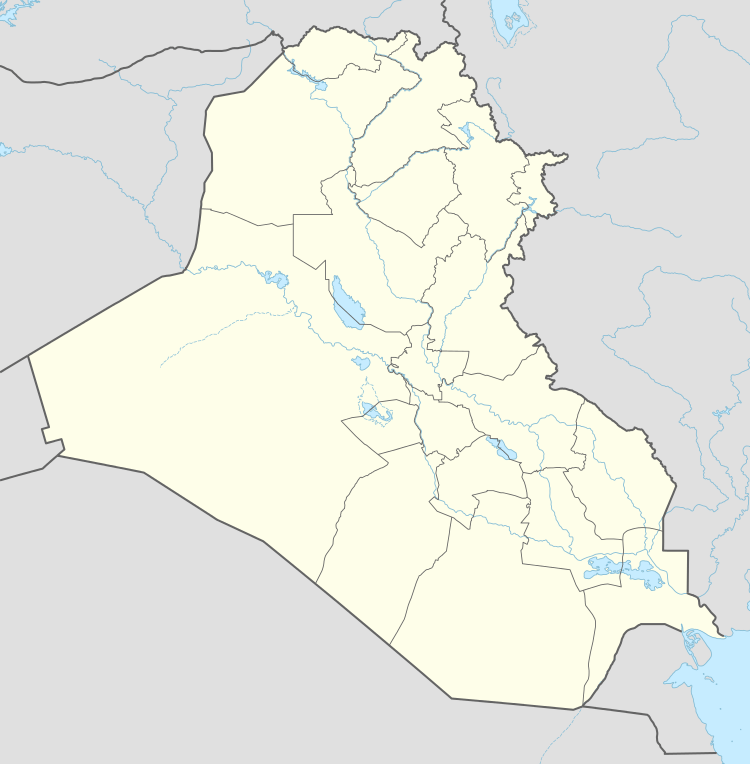Dilbat
Dilbat (modern Tell ed-Duleim or Tell al-Deylam, Iraq) was an ancient Sumerian minor tell (hill city) located southeast from Babylon on the eastern bank of the Western Euphrates in modern-day Al-Qādisiyyah, Iraq. The ziggurat E-ibe-Anu, dedicated to the goddess Urash, was located in the center of the city and was mentioned in the Epic of Gilgamesh.[1]
Dilbat | |
|---|---|
 Dilbat Location in Iraq | |
| Coordinates: 32°17′44″N 44°27′58″E | |
| Country | |
History
Dilbat was founded during the Sumerian Early Dynastic II period, around 2700 BC. It is known to have been occupied, at least, during the Akkadian, Old Babylonian, Kassite, Sasanian and Early Islamic periods. It was an early agricultural center cultivating einkorn wheat and producing reed products.[2] It lay on the Arahtum canal.
Archaeology
The site of Tell al-Deylam consists of two mounds, a small western mound with 1st millennium BC and Early Islamic remains and a larger east mound, roughly 500 meters in circumference, with remains from the 1st to 3rd millennium BC. Dilbat was excavated briefly by Hormuzd Rassam, who recovered some cuneiform tablets at the site, mainly from the Neo-Babylonian period.[3] The site was worked in 1989 by J. A. Armstrong of the Oriental Institute of Chicago.[4][5] Though Dilbat itself has only been lightly excavated by archaeologists, numerous tablets from there have made their way to the antiquities market over the years as the result of unauthorized digging.
See also
- Cities of the Ancient Near East
- Tell (archaeology)
Notes
- Stephen Langdon, The Epic of Gilgamish. A Fragment of the Gilgamish Legend in Old-Babylonian Cuneiform, 1919
- A. Goddeeris, Economy and Society in Northern Babylonia, Peeters , 2002, ISBN 90-429-1123-9
- Hormuzd Rassam and Robert William Rogers, Asshur and the land of Nimrod, Curts & Jennings, 1897
- J. A. Armstrong, Dilbat revisited: the Tell al-Deylam project, Mar Sipri, vol. 3, no. 1, pp, 1-4, 1990
- James A. Armstrong, West of Edin: Tell al-Deylam and the Babylonian City of Dilbat, The Biblical Archaeologist, vol. 55, no. 4, pp. 219-226, 1992
Further reading
- Christine Lilyquist, The Dilbat Hoard, Metropolitan Museum Journal, vol. 29, pp. 5–36, 1994
- S. G. Koshurnikov and N. Yoffee, Old Babylonian Tablets from Dilbat in the Ashmolean Museum, Iraq, vol. 48, pp. 117–130, 1986
- Matthew W. Stolper, Late Achaemenid Texts from Dilbat, Iraq, vol. 54, pp. 119–139, 1992
- Joseph Etienne Gautier, Archives d'une famille de Dilbat au temps de la premiere dynastie de Babylone, Le Caire, 1908
- SG Koshurnikov,A Family Archive from Old Babylonian Dilbat, Vestnik Drevnii Istorii, vol. 168, pp. 123ff, 1984